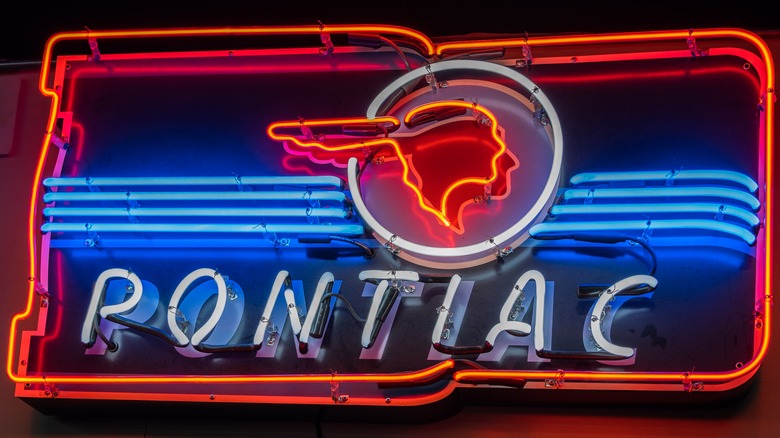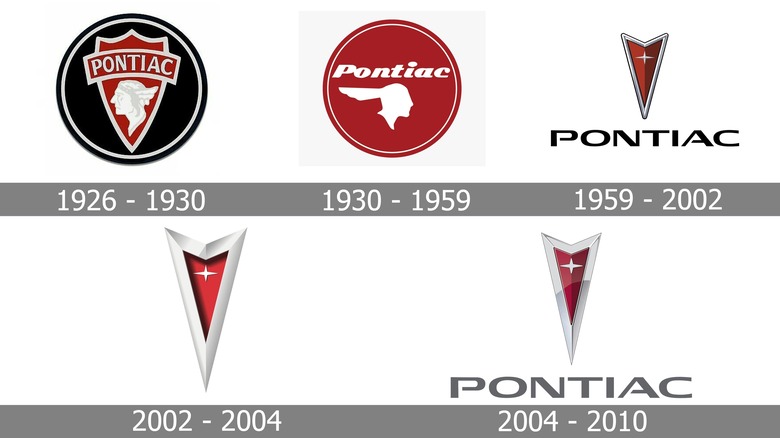The History And Meaning Behind Pontiac's Logo
In April 2009, General Motors announced it was ceasing production of its Pontiac line of vehicles in an effort to stave off bankruptcy. The U.S. government had stepped in and bailed out the industry, giving automakers nearly $81 billion in total, with $10.2 billion footed by taxpayers. General Motors and Chrysler alone received $17.4 billion. But in June, the company was still forced to file bankruptcy even after cutting bait on failing products. In January 2010, the last vehicle. a G6 with the iconic red arrowhead logo, rolled off the Orion Township Assembly Line.
For many, the name "Pontiac" conjures up classic American metal from the 1960s when the company first put the term "muscle car" in print when advertising the 1964 GTO. And who could forget the legendary Firebird Trans-Am, made famous by Burt Reynolds in "Smokey and the Bandit." Once upon a time, Pontiac was the shining star in GM's stable, with its entire lineup earning Motor Trend's prestigious Car of the Year award in 1965.
Pontiac began humbly enough in 1893 when Albert G. North and Harry G. Hamilton founded the Pontiac Buggy Company in Pontiac, Michigan (located in the county of Oakland). As the automobile began to replace horse-drawn carriages, the pair changed their business model and, in 1906, the Oakland Motor Car company was born. Three years later, General Motors bought them out, and in 1926 it created the Pontiac brand of cars we know today.
An Ottawa Indian chief and maker of iconic cars
The new line of cars was named Pontiac to honor the Ottawa Indian chief of the same name. Regarded as a great leader, Pontiac brought together nearly every tribe "from Lake Superior to the lower Mississippi" to oust the British from their lands. He is best known for directly attacking Fort Detroit (later known as the city of Detroit) on his own. While that failed, his overall plan worked and resulted in a peace treaty signed in July 1766. Though the brand's name stayed the same, the logo changed a few times over the years. However, it always maintained Native American iconography.
For the first thirty-three years (1926 through 1959), the company used two different logos, which were not all that dissimilar from each other. The first incorporated the old shield used by Oakland as the backdrop to the company's name and Pontiac's profile. The second version evolved into a more rounded shield with a far less "cartoonish" profile image of Pontiac.
In 1956, Semon E. "Bunkie" Knudsen was appointed general manager of GM. At the time, he was the youngest manager General Motors ever had, and he came new ideas. The company moved away from the old-fashioned-looking profile of Pontiac to something more updated and elegant to usher in a new era for the company. Thus, the downward-pointed arrowhead with a four-pointed star known as the "Dart" was unveiled in 1959. Over the years, the styling changed slightly but, for the most part, remained unchanged. General Motors never revealed what, if anything, the color scheme or the star represented (via ListCar Brands).

